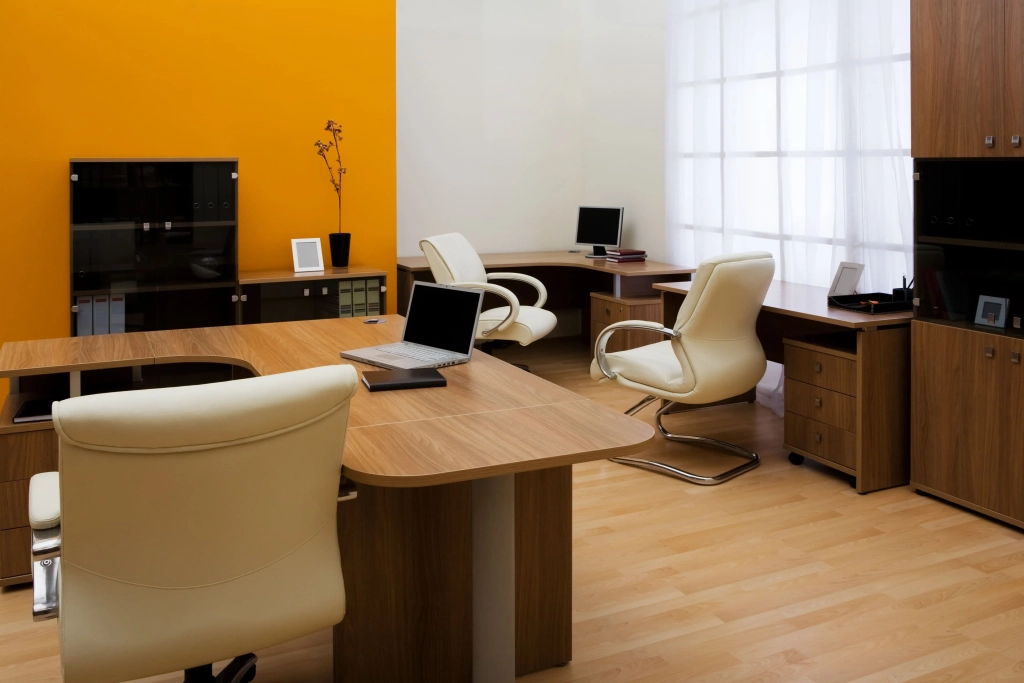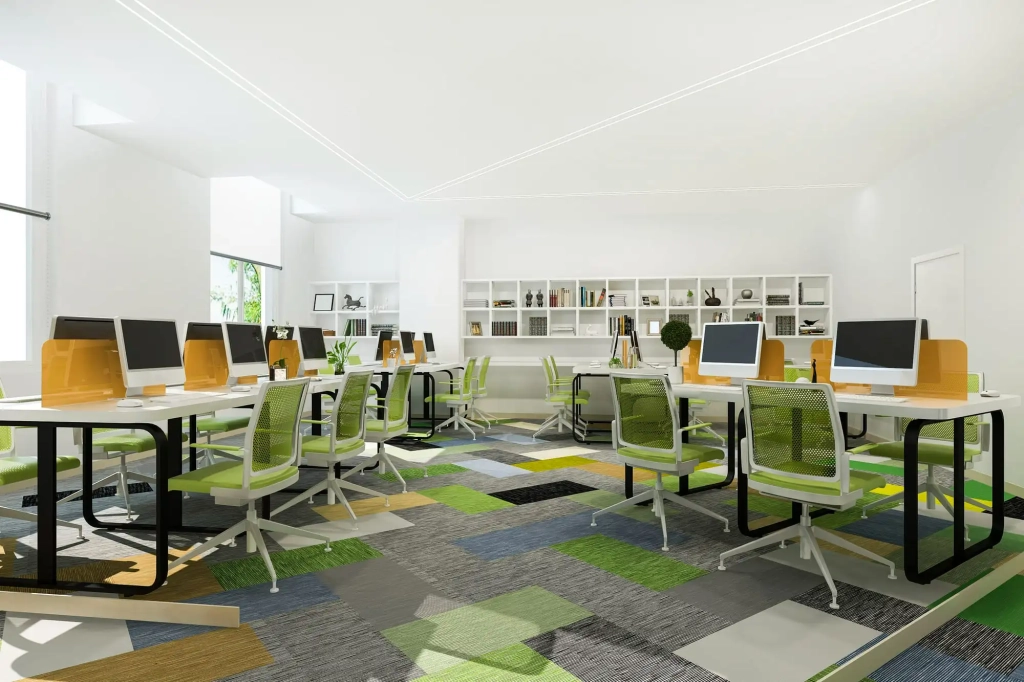The Rise of Workspaces in Residential Developments: Live-Work Lifestyles

The rise of workspaces in residential developments is more than just a trend; it’s a revolution that’s breaking down the barriers between professional and personal life. As the global workplace evolves, so does the need for more flexible, accessible, and cohesive living and working environments.
The phenomenon of integrating workspaces into residential areas is not merely about convenience; it’s a manifestation of our evolving lifestyles, values, and aspirations. From freelancers to corporate employees, from urban centers to suburban areas, the way we live and work is undergoing a profound transformation. This article delves into the intricacies of this paradigm shift, examining its origins, benefits, challenges, global trends, and future prospects.
RELATED: Turn a Room into a Stylish Home Office

Understanding the Concept
The integration of workspaces within residential areas is a fascinating response to a complex set of social, economic, and technological changes. The global shift towards remote work, the rise of the gig economy, and the increasing importance of work-life balance are converging to create demand for spaces that can accommodate both living and working. These spaces are thoughtfully designed to provide the comforts of home while facilitating professional activities.
Historical Perspective
Live-work spaces have historical roots, tracing back to the time when artisans and tradesmen lived and worked on the same premises. What differentiates today’s live-work lifestyles from the past is the diversity of professions and the advanced architectural designs that cater to a wide range of needs. Modern live-work spaces are not confined to a specific profession or class; they encompass a wide array of professionals from different sectors.
Why the Shift?
Several key factors have contributed to this monumental shift. The rise of remote work, facilitated by technological advancements, has made it possible for more people to work from anywhere. Coupled with the growing emphasis on work-life balance, there is a need for spaces that allow for flexibility, creativity, and overall well-being. Furthermore, the increasing cost of living in urban centers and the environmental concerns associated with commuting have further fueled the desire for live-work spaces.
Economic Implications
From an economic standpoint, The Rise of Workspaces in Residential Developments: Live-Work Lifestyles has created a win-win situation for both developers and occupants. Developers see the potential for a new market segment, while occupants benefit from reduced commuting expenses and potentially lower living costs. This trend also has the potential to revitalize neighborhoods and contribute to local economic development.
Architectural Innovations
Creating spaces that serve both living and working purposes requires innovative architectural solutions. Modern designs focus on multifunctionality, allowing spaces to be easily transformed to serve different needs. From hidden workstations to convertible furniture, the architecture of live-work spaces is a testament to human creativity and adaptability.
Technology’s Role
Without technology, the rise of live-work lifestyles would have been impossible. High-speed internet, advanced communication tools, and home office equipment have made working from home not only feasible but also efficient. The accessibility of these technologies has democratized the live-work concept, making it accessible to a broader range of professionals.
Legal and Regulatory Aspects
Legal and regulatory considerations are paramount when creating workspaces within residential areas. There are zoning laws, permits, and regulations to navigate. Understanding the local legal landscape and seeking professional guidance can be essential in successfully implementing live-work spaces.
The Future of Integrated Work Environments
The future of live-work lifestyles looks promising, with trends pointing towards increased sustainability, community-building, and adaptability. As more people embrace this lifestyle, there is potential for more innovation, collaboration, and social connection, making our living spaces not just places to reside but hubs of creativity, growth, and well-being.
Benefits of Live-Work Lifestyles
Improving Work-Life Balance
One of the most appealing aspects of live-work lifestyles is the potential for improved work-life balance. By eliminating the need for commuting and allowing for a more flexible schedule, individuals can create a more harmonious blend of professional and personal activities. This balance can lead to increased satisfaction, productivity, and overall wellness.
Economic Savings
The economic benefits of living and working in the same space are substantial. Savings on transportation, office rent, and utilities can add up, providing more financial freedom and stability. These savings can be reinvested in personal development, hobbies, or other life-enhancing activities.

Environmental Impact
The environmental impact of live-work lifestyles cannot be overlooked. By reducing the need for daily commuting, there’s a significant reduction in carbon emissions and energy consumption. This sustainable approach aligns with the global push towards greener living practices.
Community and Networking Opportunities
Live-work spaces often foster a sense of community and provide networking opportunities. Shared workspaces within residential complexes such as home offices in condos can create a collaborative environment, leading to professional growth and social connections.
Challenges and Solutions
Design Challenges
Designing a space that efficiently serves both living and working needs can be challenging. Professional guidance, thoughtful planning, and innovation are required to create environments that are both functional and aesthetically pleasing. Solutions for a home office design can include multifunctional furniture, soundproofing, and proper lighting.
Zoning and Regulatory Compliance
Legal compliance is a significant challenge in implementing live-work spaces in many condo units. Engaging legal professionals, understanding zoning laws, and obtaining the necessary permits can help navigate these challenges.
Balancing Privacy and Professionalism
Creating a professional environment within a residential setting requires careful consideration of privacy, decor, and organization. Solutions can include dedicated work areas, professional-grade equipment, and mindful scheduling of work activities for you to work in the comfort of your home.
How to Implement Live-Work Lifestyles in Your Space
Assessing Your Needs
The first step in implementing a live-work lifestyle is assessing your individual needs, preferences, and constraints. Considerations include the nature of your work, space requirements, technology needs, and personal lifestyle preferences.
Choosing the Right Location
Location plays a crucial role in the success of live-work spaces. Proximity to essential amenities, community engagement opportunities, and legal considerations must be weighed carefully.
Designing the Space
Designing a live-work space requires a balance between aesthetics, functionality, and comfort such as in the living room. Engaging professionals and utilizing innovative design solutions for a modern home office can help create a space that truly resonates with your live-work aspirations.

The Global Perspective: Live-Work Lifestyles Around the World
North America
In North America, cities like New York, San Francisco, and Toronto have embraced the live-work trend. From converted warehouses to new developments, the region is leading in innovative live-work solutions.
Europe
European cities like London, Berlin, and Amsterdam have a rich history of live-work spaces, reflecting cultural values of community, creativity, and sustainability.
Asia
Asia’s approach to live-work lifestyles is unique, with cities like Manila, Tokyo, and Singapore offering compact, efficient solutions that cater to dense urban populations.
Emerging Markets
Emerging markets are showing interest in live-work lifestyles, adapting to local needs and cultural values. The potential for growth in these regions is substantial.
The Rise of Workspaces in Residential Developments is a transformative movement that is redefining how we live and work. By merging the professional and personal realms, it’s creating spaces that are more flexible, sustainable, and conducive to human flourishing. The potential economic, environmental, and lifestyle benefits make it a compelling option for a diverse range of professionals. With ongoing innovation, community-building, and global adoption, the live-work lifestyle promises to be a significant aspect of our future living landscape.
The integration of workspaces into residential areas, and the consequent rise of live-work lifestyles, is a testament to human innovation and adaptability. This comprehensive exploration has shed light on various dimensions of this growing trend, providing insights, benefits, challenges, and practical guidance. As we move forward in this ever-changing world, the live-work lifestyle stands as a symbol of our ability to adapt, grow, and thrive.
FAQs
What is the driving force behind The Rise of Workspaces in Residential Developments: Live-Work Lifestyles?
The rise of remote work, technological advancements, and the desire for work-life balance are key driving forces.
How do live-work spaces contribute to sustainability?
By reducing commuting and promoting efficient use of space, they contribute to environmental sustainability.
Can anyone adapt to live-work lifestyles?
With thoughtful planning, most professionals can adapt to this lifestyle, though individual needs and preferences must be considered.
How do I design a space that serves both living and working needs?
Careful assessment of needs, professional guidance, and innovative design solutions can create a successful live-work space.
Read more here: AllProperties Latest Blogs




